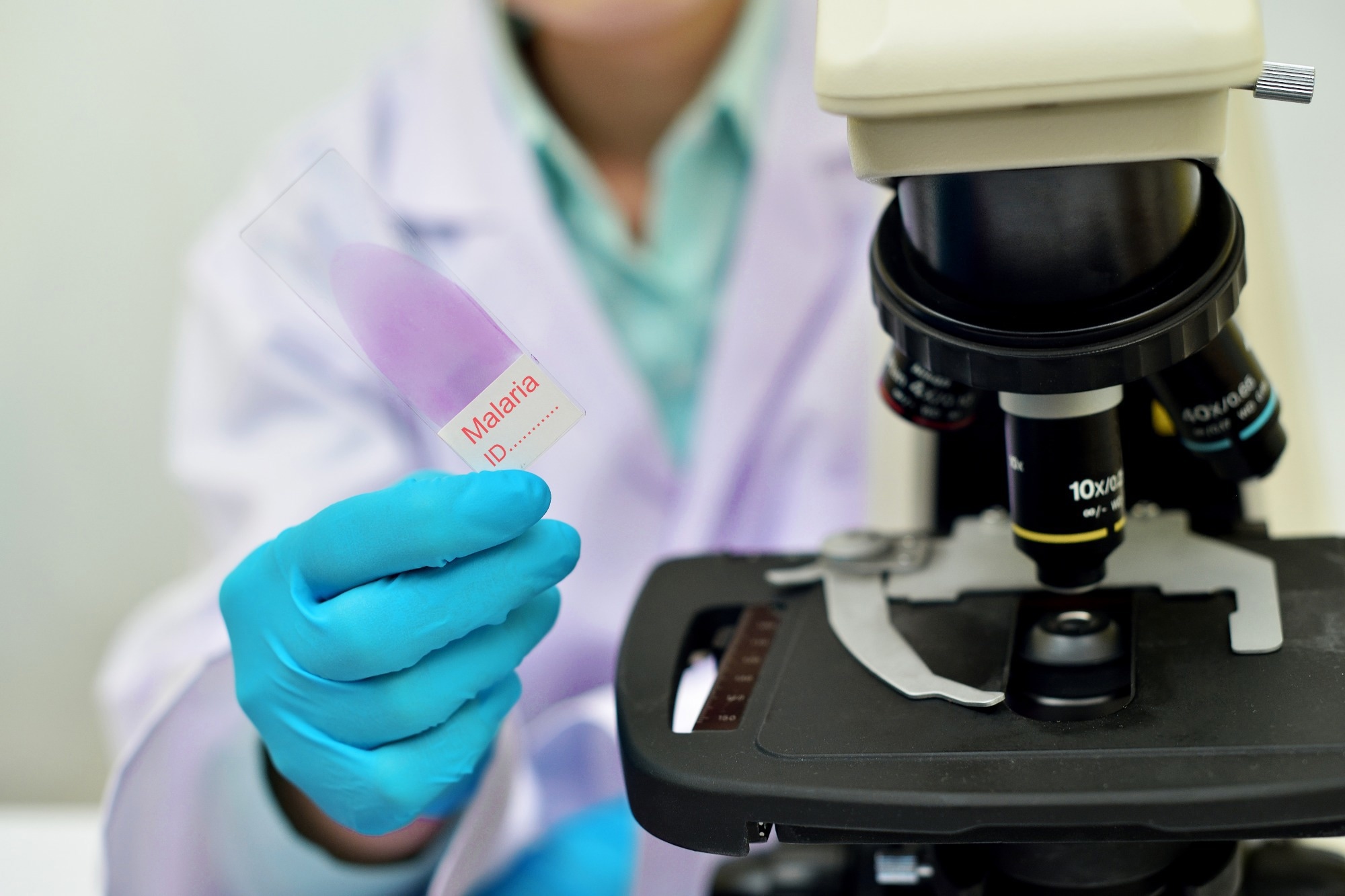In a recent study published in IJID Regions, researchers evaluated the accuracy of rapid diagnostic tests (RDTs) and microscopy in detecting asymptomatic Plasmodium infection in pregnant women in Ogun State, Nigeria. This work aims to support malaria control and elimination efforts, aligning with Goal 3 of the Sustainable Development Goals, which focuses on ensuring healthy lives and well-being for all.

Image Credit: Jarun Ontakrai/Shutterstock.com
Background
The impact of malaria in pregnancy (MiP) is significant, particularly in high-transmission areas like Nigeria, where prevalence among pregnant women can reach 25-50 %. While MiP often presents without symptoms due to acquired partial immunity, it remains a reservoir for malaria transmission. Asymptomatic parasitemia, where individuals harbor Plasmodium parasites without exhibiting symptoms, further complicates the situation.
Accurate and timely diagnosis is crucial for effective malaria control. Although RDTs and expert microscopy are widely used, their limitations, including sensitivity issues with low-density infections, expertise requirements, and cost, pose challenges.
About the Research
This study assessed the diagnostic accuracy of RDTs and microscopy in detecting asymptomatic Plasmodium falciparum infection in pregnant women attending antenatal care in Ogun State, Nigeria. Nested polymerase chain reaction (PCR) was used as the reference standard to evaluate the sensitivity, specificity, positive predictive value (PPV), and negative predictive value (NPV) of the diagnostic methods.
A total of 406 afebrile pregnant women at various gestational ages were included. Blood samples were collected via finger prick for RDT and microscopy analysis, with hemoglobin (Hb) levels measured using a hematology analyzer.
Blood spots were also collected for molecular analysis. Anemia was categorized into severe, moderate, and mild based on Hb levels below 11 g/dL. Furthermore, pregnancy outcomes and insecticide-treated net use were recorded to assess their impact on infection prevalence and maternal health.
For molecular analysis, total genomic deoxyribonucleic acid (gDNA) was extracted from dried blood spots using the QIAmp DNA Blood Mini Kit. Nested PCR targeting the 18S ribosomal ribonucleic acid (rRNA) gene was employed to detect or identify Plasmodium species.
The PCR master mix contained 100 nM of each primer, 1× PCR buffer, 50 ng of gDNA, 0.2 mM dNTPs, and 1 unit of Taq DNA polymerase in a 20 µl volume. The genus was specified using outer PCR amplicons as templates for nested PCR, with results visualized via electrophoresis of 2 % agarose gel.
Research Findings
The study found that microscopy detected malaria parasites in 21.2 % of participants, while RDTs detected them in 8.6 %. Nested PCR detected Plasmodium parasites in 32 % of the women. PCR speciation identified 107 Plasmodium falciparum infections and five non-falciparum infections (three P. ovale and two P. malariae). Additionally, 18 samples showed co-infections, including 13 P. falciparum/P. ovale, three P. falciparum/P. malariae, and two P. ovale/P. malaria.
The diagnostic performance analysis showed that microscopy had moderate sensitivity (65.3 %) and high specificity (98.2 %). RDT had low sensitivity (51.4 %) and moderate specificity (69.5 %). However, combining RDT and microscopy achieved 100 % sensitivity and specificity. The PPV and NPV for microscopy were 94.2 % and 86.6 %, respectively, while for RDT, they were 13.7 % and 93.8 %. The study also noted a high prevalence of asymptomatic Plasmodium infection (32 %) detected by PCR, high insecticide-treated net use (76 %), low maternal anemia (17 %), and a low rate of poor pregnancy outcomes (14 %).
Applications
These findings hold significant implications for malaria control and elimination efforts in Nigeria and other endemic regions. The low sensitivity of RDTs underscores the need to improve existing RDTs or develop more sensitive diagnostic tools for detecting malaria during pregnancy.
The high prevalence of asymptomatic infections highlights the importance of implementing effective MiP control strategies, such as integrating malaria testing and treatment into antenatal care. This integrated approach can contribute to a more comprehensive control strategy.
Conclusion
The study concluded that RDT alone has low sensitivity for diagnosing malaria in pregnant women in this setting, but combining RDT with microscopy improves diagnostic performance. However, the limitations of microscopy—such as the need for skilled personnel and well-equipped laboratories—make it less viable for widespread use in resource-limited settings.
Moving forward, the authors recommend developing low-cost, easy-to-use, and highly sensitive diagnostic tests for malaria during pregnancy to help prevent poor outcomes and better estimate the prevalence of Plasmodium infection in pregnant women.
Journal Reference
Adebusuyi, SA., et al. (2024). Performance of Rapid Diagnostic Test, Light Microscopy, and Polymerase Chain Reaction in Pregnant Women with Asymptomatic Malaria in Nigeria. IJID Regions. DOI: 10.1016/j.ijregi.2024.100416, https://www.sciencedirect.com/science/article/pii/S2772707624000870
Disclaimer: The views expressed here are those of the author expressed in their private capacity and do not necessarily represent the views of AZoM.com Limited T/A AZoNetwork the owner and operator of this website. This disclaimer forms part of the Terms and conditions of use of this website.